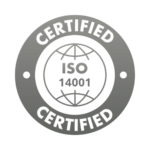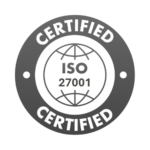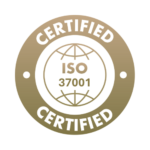
IT can be defined as the network infrastructure and processes that are used to create, process, store, secure and transmit all forms of electronic data. In contrast, OT, as operational technology, most often includes the hardware responsible for physical processes. In practice, it often happens that even manufacturing companies themselves are not used to reaching out to an IT partner to outsource certain services or innovation management to increase productivity and efficiency.
And it is connectivity, as a natural feature of IT systems, that can propel manufacturing enterprises into the world of lower downtime, higher efficiency and cost savings. This technical understanding enables data from different sources to be aggregated into platforms that provide good visibility of processes in real time. Thus, sophisticated monitoring improves change management in enterprises, increases production visibility, and adds relevance and promptness to decision-making processes.
Most control systems in OT are currently not networked, making it difficult for them to communicate or share information. Even centralised control facilities have traditionally used relatively closed or proprietary communication protocols. Yes, a certain argument has been made in the past on the subject of security. Today, however, the main function of IT is not only to ensure that data is processed and distributed, but also that all transmissions exhibit high standards of security.
If a manufacturing company decides to embrace a new era of industrial efficiency, an IT firm may be at the heart of this transformation with expertise in areas such as:
1. A deep understanding of data: they know how to collect, analyse and use data for better decision-making. This expertise is invaluable when applied to OT, where process optimisation and efficiency are paramount.
2. Security, which comes both first and last: security threats are everywhere, and OT systems are often more vulnerable, especially if they were designed without Internet connectivity in mind. IT firms bring to the table advanced security protocols and practices that can protect your operational technology from both external and internal threats.
3. Integration expertise: one of the biggest challenges in IT/OT convergence is the integration of disparate systems and technologies. IT firms are experienced in solving these challenges, whether it's cloud services, databases, or third-party applications.
4. Predictive maintenance and optimisation: by leveraging big data analytics and artificial intelligence, IT firms can anticipate problems before they cause downtime. They can also identify areas for improvement, leading to dramatically improved efficiency and reduced costs.
The production and distribution of heat and hot water is one area of critical infrastructure that places high demands on cybersecurity.
We ensure the smooth running of OT (Operational Technology) infrastructure for one of the largest utility companies in the energy sector. This involves the comprehensive provision of data transfer from process plants to data centres, where data is processed and monitored. We have designed network architecture and cluster solutions from the ground up, which we continuously monitor and provide 24/7/365 technical support. We have extensive experience and references in this area, so we can also address specific customer requirements.
The convergence of IT and OT is not just a trend; it's a necessity for anyone who wants to stay relevant in the rapidly changing industry environment. Take control of your operational technology with a partner who understands your needs. Contact us today to find out how we can help improve and protect your industrial processes.




Copyright © 2025 Všetky práva vyhradené